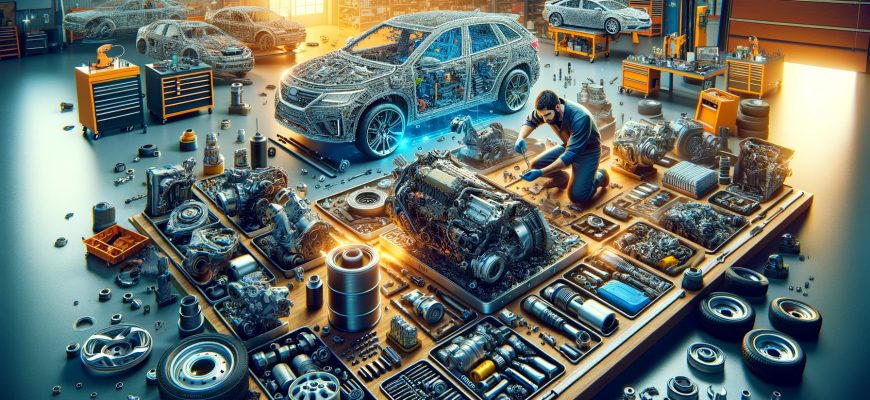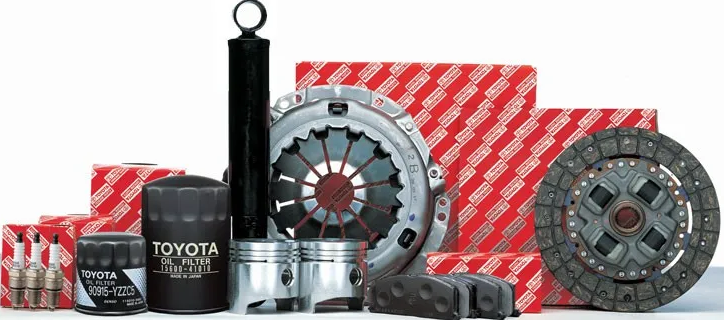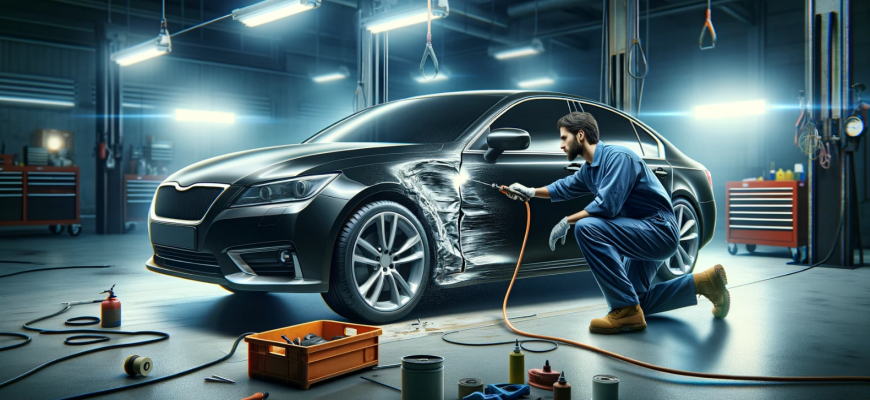Overcoming the Challenges of Vintage Car Collision Repairs
Overcoming the Challenges of Vintage Car Collision Repairs
Vintage cars hold a special place in the hearts of their owners. These vehicles are not just modes of transportation; they are treasured pieces of history. However, when accidents occur, restoring these vehicles can be particularly challenging. This article delves into the specialised world of vintage car collision repairs, offering essential insights and advice for Australian vintage car owners.
Understanding Vintage Car Collision Repairs
Vintage car collision repairs go beyond simple dent fixing or repainting. These vehicles often require a delicate approach to preserve their historical accuracy and intrinsic value. Specialised workshops like TC Classics understand that vintage car repairs demand a higher level of care and precision. They emphasise that each repair must maintain the vehicle’s original specifications to ensure both its safety and its authenticity.
Challenges in Vintage Car Repairs
- Parts Availability: One of the primary obstacles in repairing vintage cars is sourcing the right parts. Unlike modern vehicles, vintage cars often need parts that are no longer in production. Workshops like Capital Steering & Suspension have adapted by remanufacturing parts or sourcing them through extensive networks of suppliers and collectors.
- Specialised Skills: The techniques used in vintage car repairs are often different from those applied to modern vehicles. It requires craftsmen who are skilled in older techniques such as lead loading and hand-shaping metal. Businesses like Hobart Smash Repairs and Platinum Classic Restorations provide teams with decades of experience, ensuring that every repair respects the vehicle’s era.
- Technological Adaptations: Even though vintage cars need old-fashioned craftsmanship, modern technology plays a crucial role in ensuring the repairs meet current safety standards. Advanced measuring and alignment tools are used to ensure that everything from the frame to the suspension is perfectly aligned. TC Classics, for example, employs state-of-the-art technologies to ensure their repairs are both accurate and safe, bridging the gap between old-world charm and modern-day precision.
Best Practices for Vintage Car Collision Repairs
Choosing the right repair shop is crucial. It’s important to select facilities that specialise in vintage vehicles. These establishments, like Platinum Classic Restorations, not only have the necessary expertise but also the passion for returning vintage cars to their former glory.
Custom solutions are equally important. Facilities that offer custom part fabrication and specialised machining, like Vintage and Classic Automotive, are invaluable. They have the capability to produce even the most elusive parts, ensuring that every aspect of the repair is authentic and up to standard (Vintage and Classic Auto).
Regular maintenance and inspections can prevent many issues from escalating into major repairs. A regular check-up can identify potential problems before they result in damage, ensuring that the vehicle remains in optimal condition. This proactive approach is advocated by experts like those at Vintage and Classic Automotive, who offer comprehensive maintenance services tailored for vintage vehicles (Vintage and Classic Auto).
The restoration of a vintage car following a collision is a meticulous and complex process that blends traditional craftsmanship with modern technology. For owners of these classic beauties, choosing the right repair service is pivotal. By selecting specialists who understand the nuances of vintage vehicles and can offer custom solutions, car owners can rest assured that their cherished possessions are in capable hands. The journey to restore a vintage car might be challenging, but with the right expertise, it can be a rewarding experience that brings a piece of automotive history back to life.
Here are some posts from the Dynamic Paint N Panel website that are relevant to vintage car collision repairs:
- Enhancing Your Car’s Longevity with Quality Collision Repairs: A Guide for Australians – This post discusses how quality collision repairs can extend the life of your vehicle, which is crucial for maintaining vintage cars.
- The Dos and Don’ts After a Collision: A Guide for Adelaide Drivers – This article offers practical advice for drivers on what to do immediately following a collision, useful for vintage car owners.
- Tips for Eco-Friendly Car Care and Collision Repair – While focused on eco-friendly practices, this post also touches on care techniques that could benefit the preservation of vintage cars.
- The Importance of Colour Matching in Auto Body Repair – Essential for restoring vintage cars, this post explains why precise colour matching is critical in collision repairs to ensure the vehicle retains its original appearance.
- How to Protect Your Car’s Value with Professional Collision Repair – This article highlights the importance of professional repairs to maintain the value of a vehicle, especially pertinent for vintage car owners.
Navigating the World of Aftermarket Parts in Collision Repair

Navigating the World of Aftermarket Parts in Collision Repair
When a vehicle undergoes collision repair in Australia, one of the pivotal decisions involves the choice between Original Equipment Manufacturer (OEM) parts and aftermarket parts. Understanding the nuances of aftermarket parts is essential not only for automotive professionals but also for car owners who seek to make informed decisions about their vehicle repairs.
Understanding Aftermarket Parts
Aftermarket parts are replacement components that are not sourced from the vehicle’s original manufacturer. These parts are usually produced by third-party companies and are designed to function the same as, or similar to, OEM parts. They are prevalent in the Australian automotive repair market due to their cost-effectiveness and availability. However, the quality and performance of these parts can vary significantly, which is a crucial consideration for both safety and vehicle integrity.
Benefits and Drawbacks of Aftermarket Parts
The primary advantage of aftermarket parts is cost-effectiveness. They are generally less expensive than OEM parts, often making them a go-to choice for insurance companies and car owners looking to save on repair costs. Furthermore, aftermarket parts can reduce the total time a car spends in the shop because they are more readily available than OEM parts, which sometimes need to be ordered directly from the manufacturer.
However, the drawbacks of aftermarket parts are notable. There can be significant variability in the quality and fit of these parts, which can affect the vehicle’s safety and functionality. For instance, the Insurance Institute for Highway Safety has shown that while some aftermarket parts perform comparably to OEM parts, others may not meet these standards, potentially compromising vehicle safety.
Regulatory and Industry Standards
In Australia, the use of aftermarket parts in collision repairs is subject to specific regulations that ensure safety and performance standards are met. The Australian Automotive Aftermarket Association (AAAA) provides guidance and advocacy for standards in the automotive repair industry, ensuring that aftermarket parts are reliable and safe to use (AAAA).
Furthermore, certifications such as those from the Certified Automotive Parts Association (CAPA) play a crucial role in bolstering consumer confidence. CAPA-certified parts have undergone rigorous testing to meet industry standards for fit, form, and function, and are considered a safe choice comparable to OEM parts.
Choosing the Right Parts: A Guide for Repair Shops
For repair shops, making the right choice between OEM and aftermarket parts involves several considerations:
- Quality Assurance: It’s crucial to source aftermarket parts from reputable suppliers who offer guarantees on their parts. This ensures that the parts are reliable and will not adversely affect the vehicle’s performance.
- Certifications: Opting for parts that are CAPA certified or have other reputable endorsements can help ensure that aftermarket parts will perform well and meet safety standards.
- Technology and Information Access: Utilizing up-to-date digital platforms and databases like the SUN Collision Repair Information system can help shops access the latest OEM information and repair procedures, ensuring repairs are done correctly.
Conclusion
Choosing between OEM and aftermarket parts involves balancing cost, quality, and safety. While aftermarket parts offer a cost-effective solution, it is vital to ensure they do not compromise on quality or safety. By staying informed and adhering to industry standards, both repair shops and vehicle owners can make decisions that ensure the safety and longevity of their vehicles.
Navigating the world of aftermarket parts in collision repair requires knowledge and vigilance to ensure that every vehicle is restored to its pre-accident condition, safeguarding the performance and safety of the vehicle for its users.
READ MORE:
- Enhancing Your Car’s Longevity with Quality Collision Repairs: A Guide for Australians – This post discusses how quality collision repairs can extend the lifespan of a vehicle, emphasizing the importance of choosing the right parts and repair practices.
- The Dos and Don’ts After a Collision: A Guide for Adelaide Drivers – Provides guidance on what drivers should and shouldn’t do following a collision, including how to choose repair services and parts.
- Tips for Eco-Friendly Car Care and Collision Repair – Offers advice on maintaining your car and handling collision repairs in an environmentally friendly way, potentially touching on the types of parts used.
- The Importance of Colour Matching in Auto Body Repair – Focuses on the aesthetic aspects of collision repair, which is crucial when using aftermarket parts to ensure they match the original vehicle’s appearance.
- How to Protect Your Car’s Value with Professional Collision Repair – Discusses how professional repairs using the right parts can maintain or enhance the resale value of a car.
Why Genuine Parts Matter for Your Vehicle’s Repair

When it comes to maintaining and repairing your vehicle, the debate between using genuine versus aftermarket parts is a pivotal one. For many Australian vehicle owners, the choice might not seem significant at first glance. However, the type of parts used in your vehicle can have profound implications not only on its performance but also on your safety and the vehicle’s overall lifespan. This article delves into the essential reasons why opting for genuine parts is a wise decision for any vehicle repair.
Understanding Vehicle Parts: Genuine vs. Aftermarket
At the core of this discussion are two types of parts: genuine and aftermarket. Genuine parts, also known as Original Equipment Manufacturer (OEM) parts, are made directly by the vehicle’s manufacturer. They are the very same parts used in the production of new vehicles. On the other hand, aftermarket parts are produced by different manufacturers and not endorsed by the original vehicle manufacturer. While aftermarket parts are often touted for their affordability and variety, they may not always match the quality and compatibility of genuine parts.
The Importance of Genuine Parts for Your Vehicle
Safety: The paramount concern for any vehicle owner should be safety. Genuine parts are designed and tested specifically for your vehicle model, ensuring a perfect fit and optimal performance. This precise engineering guarantees that your vehicle operates as it was intended, maintaining the manufacturer’s safety standards. In contrast, aftermarket parts might not have undergone the same rigorous testing, potentially compromising vehicle safety.
Warranty Protection: Using genuine parts is also crucial in preserving your vehicle’s warranty. Many manufacturers stipulate that the warranty becomes void if aftermarket parts cause damage. Genuine parts come with their own warranty coverage, offering peace of mind and protection against defects.
Long-Term Value: While genuine parts might come with a higher price tag initially, their value becomes evident in the long run. Designed to meet the exact specifications of your vehicle, genuine parts usually last longer and perform better, reducing the need for frequent replacements. This can lead to significant savings over time, not to mention the avoidance of the hassle associated with less reliable aftermarket parts.
How to Ensure You’re Getting Genuine Parts
Ensuring you’re getting genuine parts for your vehicle repair or service might seem daunting, but it doesn’t have to be. The simplest way to guarantee authenticity is by purchasing parts from authorized dealers or service centers. When taking your vehicle in for service, explicitly request OEM parts and ask to see the parts’ packaging or documentation to verify their authenticity. Genuine parts often bear the manufacturer’s logo or come with certification marks that attest to their quality.
Another tip is to ask for parts by their specific part number. This can help avoid any confusion and ensures that the parts installed on your vehicle are the exact ones designed for its make and model. Being proactive in this way can make a significant difference in the quality of repair and maintenance your vehicle receives.
Choosing genuine parts for your vehicle’s repair isn’t just about maintaining its performance; it’s about prioritizing safety, preserving your warranty, and investing in your vehicle’s long-term value. While the allure of cheaper aftermarket parts can be tempting, the potential risks and costs they pose down the line are considerable. For Australian vehicle owners, the decision to opt for genuine parts is a testament to the care and investment in their vehicle’s longevity and reliability. Remember, when it comes to vehicle repair and maintenance, quality should never be compromised. Prioritize genuine parts, and give your vehicle the care it deserves.
How to Fix a Car Dent: A Comprehensive Guide for South Australians

How to Fix a Car Dent: A Comprehensive Guide for South Australians
Car dents are more than just an eyesore; they can also decrease the value of your vehicle and, in some cases, affect its structural integrity. Whether it’s from a minor fender bender, hail damage, or a shopping cart mishap, understanding the process behind car dent repair is crucial for any car owner in Australia. This guide dives into the world of professional car dent repair, highlighting the expertise, tools, and considerations involved in making your vehicle look as good as new.
Understanding Car Dents
Car dents can vary significantly, from small dings to large indentations. The repair approach depends on several factors, including the dent’s size, location, and the vehicle’s body type. Understanding these differences is the first step in assessing repair options.
The Professional Dent Repair Process
Initial Assessment
A professional technician begins with a thorough assessment to understand the extent of the damage. This step is crucial as some dents may have underlying issues that aren’t immediately visible.
Repair Methodologies
Paintless Dent Removal (PDR): PDR is a popular repair method for small to medium-sized dents, where the paint surface is still intact. Technicians use special tools to gently massage the dent from behind the vehicle’s panel, restoring its original shape without needing to repaint the area.
Traditional Dent Repair: Larger dents or those where the paint has been compromised require a more invasive approach. This method involves sanding down the damaged area, applying a body filler, and repainting, which can be a time-consuming process.
Tools and Equipment
The tools for dent repair range from simple hand tools for PDR to sophisticated paint systems for matching the vehicle’s original color. 3D imaging technology is also becoming more prevalent for precise damage assessment.
The Expertise Behind Dent Repair
Dent repair is a skilled trade that requires significant training and experience. In Australia, technicians often undergo vocational training, such as a Certificate III in Automotive Body Repair Technology, complemented by years of on-the-job training. This expertise is crucial for effectively restoring a vehicle’s appearance and ensuring the repair lasts.
DIY vs. Professional Repair
While DIY kits are available, they often yield subpar results and can even worsen the damage. Professional repairs guarantee the use of the correct techniques and materials, ensuring a result that maintains your car’s value and appearance.
Choosing a Repair Service
When selecting a repair service, look for certified technicians with positive reviews and transparent warranty policies. Costs can vary based on the repair scope, but investing in quality repair is crucial for long-term satisfaction.
Maintenance Tips to Avoid Future Dents
Preventive measures can minimize the risk of dents. Parking away from other vehicles, using protective accessories like bumper guards, and maintaining a safe distance from potential hazards can help keep your car dent-free.
Car dent repair is a nuanced process that blends art and science. By understanding the types of dents, repair methodologies, and the importance of professional expertise, car owners can make informed decisions about their vehicle’s care. Always consult with a professional to assess and repair dents promptly, ensuring your car remains in pristine condition.
Remember, the appearance of your vehicle is not just about aesthetics; it’s also about maintaining its value and ensuring its longevity. Trusting professionals with the right training and tools for the job is the best way to achieve this.
More Than Repairs
For more than 45 Years Dynamic Paint N Panel has been serving South Australians from all walks of life. Whether you drive a huge truck, a tiny two seater, or anything in between. From a tiny scratch, to a repairable write off, if you want it fixed we can fix it, and we’ve been doing it for nearly half a century.
We love hearing from our happy customers when it comes to repairs, we love restoring YOUR car to driving condition, but we are also passionate about restoring and preserving pieces of automotive history.
With new exciting developments in the coming months we are pleased to be continuing to grow, not only as Adelaide’s favourite Famliy owned and run crash repairer, but also as a place where we rebuild classic pieces of automotive engineering history back to their former glory.
It’s passionate car owners who take pride in their everyday drive, or their special weekender that drive us to keep growing in order to better serve you, and see more smiling faces and pristine cars on our roads.
With a passion for seeing you smile, excellent workmanship and unbelievable service, DPP is only a phone call away. Come in for a coffee and tell us how we can improve your everyday driving experience.
Balhannah:
Woodside, Woodside North, Lobethal, Birdwood, Mount Torrens, Lenswood, Charleston, Cherryville, Oakbank, Balhannah, Harrogate, Brukunga, Bridgewater, Hahndorf, Mount Barker, Nairne, Littlehampton, Gumeracha, Cudlee Creek, Uraidla, Adelaide Hills, Mount Pleasant, Mannum, Kanmantoo, Wistow, Stirling, Aldgate, Crafers.
Stepney:
Stepney, magill, norwood, St. Morris, College Park, Maylands, Kent town, Adelaide, Trinity Gardens, Kensington, Kensington Gardens, Kensington Park, Rostrevor, North Adelaide, Hackney, Evandale, Gilberton, Walkerville, Rose Park, Toorak Gardens, Leabrook, Rosslyn Park, Burnside, Wattle Park, Beulah Park, Payneham, Payneham South, Newton, Marden, Royston Park, Walkerville, Eastwood, Dulwich, Glenside, Tusmore, Heathpool, Vale Park, Parkside, Eastwood.

